Meeting the Moment for Asian Americans and the Environment
Chicago activist Andrea Chu is helping to build collective environmental action across racial and socioeconomic lines.
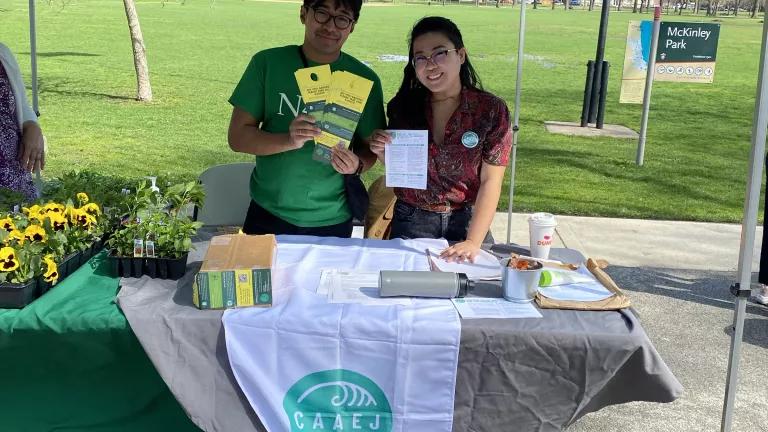
Chicago Asian Americans for Environmental Justice (CAAEJ) on Earth Day 2022
Courtesy of Andrea Chu, Chicago Asian Americans for Environmental Justice (CAAEJ)
It took more than a decade for Andrea Chu to put her finger on what exactly felt off. From the time she studied environmental sciences to her current role as the Midwest organizing manager for Asian Americans Advancing Justice Chicago (Advancing Justice Chicago), she’d been passionate about advocating for Asian equity and she enjoyed her work on environmental advocacy. But for almost as long, Chu had only ever seen these issues discussed as discrete topics. “I’d only ever talked about them, learned about them, separately,” she says. “I felt like I was living two lives.”
This division was rooted in the fact that, historically, mainstream environmental organizations have been predominantly white spaces, where, even now, environmental justice isn’t widely integrated into overarching principles. And, while there’s growing awareness of the critical roles that diversity, inclusion, and equity play in larger conversations about climate action, few of those conversations include Asian Americans or Pacific Islanders (AAPI) at the table. Nor do they take into account their perspectives and the environmental concerns most pertinent to them.
“The ways in which most environmental issues were framed didn’t really resonate with me as an Asian American,” says Chu, who is Taiwanese American. As an example, she recalls a student group while in college that rallied behind the “big idea” of recycling. But since most Asian communities already have a culture of reusing—plastic bags stockpiled under sinks and fast-food containers stacked in cupboards are common sights—such campaigns fell flat for them.

This helped Chu to see that no organization had made the clear connection between Asian American issues and environmental advocacy. “I realized these two things need to be stitched together,” she says. Chu took it upon herself to start conducting workshops to educate local Asian Americans about environmental justice and how it relates to their lived experiences. At the center of that work is the mission to begin dismantling old narratives—namely the model minority myth—that deeply shape how AAPI are affected by environmental issues.
How the model minority myth causes harm
Our society rarely acknowledges the indisputable fact that AAPI, like other people of color, routinely experience environmental racism.
A 2017 study found that while Black communities generally experience the greatest risk of cancer due to exposure to hazardous air pollutants (HAPs), certain Asian groups, namely Chinese and Korean, are at even greater risk. And “all Asian ancestry subgroups are above the U.S. mean.” This has resulted in greater rates of asthma and other respiratory and cardiovascular illnesses among AAPI than white or Hispanic groups.
In 2021, another study found that AAPI, along with Black people, Latinos, and other people of color, are exposed to higher levels of dangerous air pollution than white counterparts. In particular, AAPI are exposed to significantly higher concentrations of neighborhood tailpipe and smokestack emissions compared to white people.
These statistics may sound surprising because mainstream perception places AAPI communities in affluent neighborhoods, far from such sources of pollution. But in fact, a notable portion of AAPI live in fenceline communities and in urban areas heavily burdened by industry. The exact number is difficult to determine since there are few studies that do a deep-dive analysis of environmental harms to AAPI. “One of the reasons we don’t have enough accurate data is the model minority myth,” says Chu. “There’s this idea that all Asians are the same. We all suffer the same, or rather, the assumption that we’re all doing just fine. But that’s definitely not true.”
Analysis from the Urban Institute bears that out. About 12.3 percent of Asian Americans live below the federal poverty level, ranging from 6.8 percent of Filipino Americans to 39.4 percent of Burmese Americans. For Native Hawai‘ians and Pacific Islanders, it’s 20 percent. And these groups are often in frontline neighborhoods, like those bordering Superfund sites. That’s in stark contrast to aggregated data, which paints a rosy but distorted portrait of Asian Americans as being wealthier and healthier than average.
“This ‘invisibilization’...leads to a general lack of understanding about the nuanced diversity of our communities,” says Chu. “It’s a vicious feedback loop where, in order to achieve progress, you first have to make people aware that progress needs to be made.”
In other words, the stereotypes perpetuated by the model minority myth lead to the public misperception that deeper attention is unnecessary. And the resulting dearth of disaggregated data—which would provide a more complex, accurate portrait of AAPI—has contributed to environmental injustice against AAPI being largely ignored.

Reframing the narrative
Chu’s more recent work aims to remedy this. Through the monthly workshops she leads in Chicago, Chu explores why Asian Americans are intricately tied to issues of environmental justice, past and present. Originally, she designed these workshops to educate the local community because, even among Asians, the concept of Asian environmental injustice is not always a familiar one, or even widely recognized as injustice. “What often happened afterward was people coming up to me saying, ‘I learned a lot from this presentation. Now what do I do?’ And I didn’t have an answer for that—because nobody was doing anything about what I was talking about,” Chu says. This led her in 2019 to form, along with fellow activist Kelly Chen, the Chicago Asian Americans for Environmental Justice (CAAEJ). The organization offers opportunities for Asian Americans to take actionable steps.
A key project is the Chinatown Environmental Justice Initiative, which is focused on safe urban gardening in the greater Chinatown area of Chicago. Many Asian Americans cultivate home gardens, growing foods that are difficult to find in Western markets. Gardening is also a traditional way for elderly Asians to stay active and socially engaged. Unfortunately, some do not realize the soil they are planting in is often contaminated with lead and other toxic heavy metals. That happens for two reasons. One, most Chinatowns are located in heavily polluted areas, due to a history of racial discrimination. Two, mainstream environmental organizations don’t usually know about the cultural prevalence and value of gardens so they wouldn’t know to warn this population.
Another critical environmental injustice issue that’s rarely viewed through an Asian American lens is language accessibility. CAAEJ often goes door to door to get the word out on gardening safely, and it ensures that all flyers and other information are made available in both simplified and traditional Chinese. Language can end up being a substantial barrier for Asians, owing to the sheer number of diverse languages (and alphabets) in any given Asian community, which can have real, dire consequences.
In Richmond, California, the lack of non-English emergency alerts led hundreds of Laotian refugees to unknowingly expose themselves to highly toxic fumes after an oil refinery explosion in 1999. During Hurricane Katrina, thousands of displaced Vietnamese fled to Houston’s Chinatown because that was the only place they could get help and vital information from people who spoke their language. And in New York City, flooding from Hurricane Ida led to the deaths of nearly two dozen Asian Americans, due to warnings not being available in languages beyond English and Spanish.
Because the model minority myth paints AAPI as a monolithic group of highly educated people, local leaders often fail to take the critical step of translating public information into the myriad languages spoken by the Asian communities they represent. Chu and fellow activists believe that the problem must be addressed at the source, by lifting the mask of invisibility this myth creates.
To that end, Advancing Justice Chicago recently led the coalition that passed the Teaching Equitable Asian American Community History (TEAACH) Act, which requires Illinois public schools to include Asian American history in their curriculum. Governor JB Pritzker signed it into law in 2021, making Illinois the first state in the country to approve such legislation. “This is a really big, key piece of working out the issues around invisibility,” Chu says. “It will [also] help get to the root causes of anti-Asian hate and violence.”

The future for Asian Americans and environmental justice
Chu’s position—working at this intersection of Asian equity and environmental justice—has allowed her to bridge a critical gap and begin to change the way Asian Americans are perceived in relation to environmental harms. Of course, she wants to properly build on that.
With CAAEJ, Chu hopes to expand the scope of its work beyond urban soil contamination and address the issues that are of concern to other communities. “I would love to branch out into other neighborhoods and ethnic communities, especially those who haven’t been centered enough. For example, South Asian and Southeast Asian communities don’t receive nearly as much attention as East Asians have.”
Chu also plans to continue prioritizing partnership with other organizations to build collective environmental action across racial and socioeconomic boundaries. “Asian Americans have long been used as a wedge against other people of color,” she says. “CAAEJ is a pan-Asian organization, and we want to motivate people to not only be politically engaged in environmental issues related to Asian Americans but to act in solidarity with other communities of color.”
Previously, CAAEJ has uplifted efforts to stop General Iron, a massive metal shredding operation, from moving its site to the Southeast side of Chicago. CAAEJ has also supported Little Village Environmental Justice Organization as well as Neighbors for Environmental Justice with various campaigns. And at a recent CAAEJ meeting, the agenda included information on how to stop the Enbridge Line 5 tunnel from being built under Michigan’s Straits of Mackinac and ways to prevent Formosa Plastics from siting a plant in Louisiana's already overburdened “Cancer Alley.”
Looking beyond her work in the surrounding Chicago community, Chu aims to shine a brighter light on the effect of climate change on high-risk Asian and Pacific Islander populations around the globe. Studies show that many countries in South Asia are being hurt first and worst by climate impacts like searing heat waves, dangerous wildfires, and extreme rainfall. Given that AAPI often have strong ties to their countries of heritage and the United States is one of the world’s largest carbon emitters, environmental advocacy here will certainly have an impact there.
Already, Chu is a long way from where she started, and she’s looking forward to tackling this intersection of local and global environmental injustices next: “We need to give voice to the issues that have not been heard, the issues that we as Asian Americans need to establish in our own right. And I think we are in a place where the narrative is finally beginning to change.”
This NRDC.org story is available for online republication by news media outlets or nonprofits under these conditions: The writer(s) must be credited with a byline; you must note prominently that the story was originally published by NRDC.org and link to the original; the story cannot be edited (beyond simple things such as grammar); you can’t resell the story in any form or grant republishing rights to other outlets; you can’t republish our material wholesale or automatically—you need to select stories individually; you can’t republish the photos or graphics on our site without specific permission; you should drop us a note to let us know when you’ve used one of our stories.


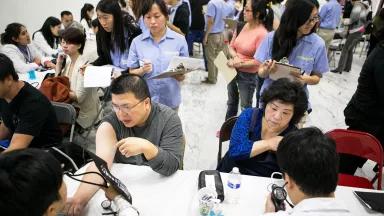
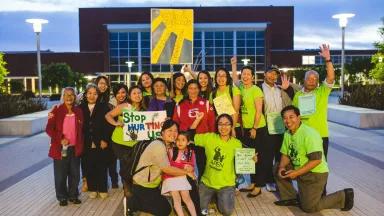
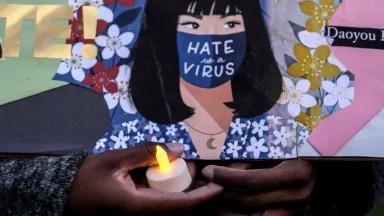
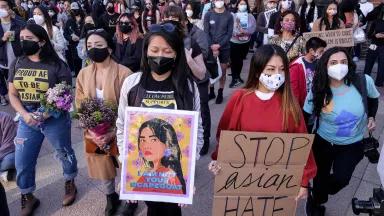
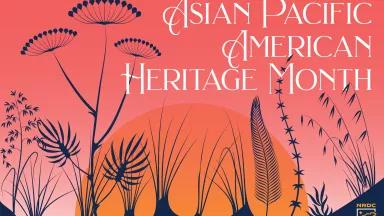
The Fight for Safe Drinking Water Doesn’t Start at the Top
After 43 Years, My Parents Finally Have Lead-Free Water
Mining for Limestone on Chicago’s Southeast Side? Residents Gear Up for a Fight (Again).